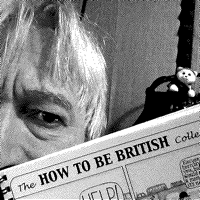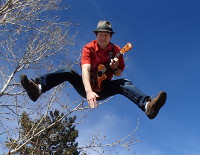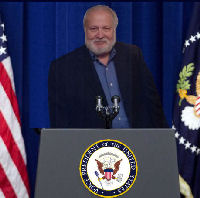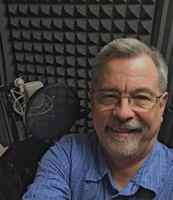 |
VO-BB - 20 YEARS OLD!
Established November 10, 2004
|
| View previous topic :: View next topic |
| Author |
Message |
Neil K. Hess
Contributore Level V

Joined: 13 Dec 2012
Posts: 184
Location: Washington State
|
 Posted: Mon Oct 16, 2017 1:35 pm Post subject: What is your editing process like? Posted: Mon Oct 16, 2017 1:35 pm Post subject: What is your editing process like? |
 |
|
When you are doing a long-form gig, what is your production and editing flow? Do you find it easier to edit as you go? Or record and then go back and edit? Or is there some other process you use?
_________________
http://neilkhessvo.com |
|
| Back to top |
|
 |
Deirdre
Czarina Emeritus

Joined: 10 Nov 2004
Posts: 13024
Location: Camp Cooper
|
 Posted: Mon Oct 16, 2017 3:46 pm Post subject: Posted: Mon Oct 16, 2017 3:46 pm Post subject: |
 |
|
It depends on the density of the material. If it's chemistry, I'll go by block or paragraph. Record, then edit block by block.
With the normal fare, quite often I'll record for 45 minutes to an hour, then edit. If I am pressed for recording time, I can read for 2- 3 hours and then edit at a different time, but I prefer the hour-or-less method.
_________________
DBCooperVO.com
IMDB |
|
| Back to top |
|
 |
Bish
3.5 kHz

Joined: 22 Nov 2009
Posts: 3738
Location: Lost in the cultural wasteland of Long Island
|
 Posted: Mon Oct 16, 2017 5:17 pm Post subject: Posted: Mon Oct 16, 2017 5:17 pm Post subject: |
 |
|
I, too, prefer an hour or less in front of the mic, depending on how I'm feeling. If I have multiple 15-mins sections, I'll keep going if I'm feeling OK, but rarely will I go over an hour. I recently did a book of short stories... but one was novella length, so I split it into two. The main reason for this is that I do all my recording standing up... and if my feet are complaining, I know my voice is getting tired (even if I don't realize it).
For long-form, I record everything into Twisted Wave (48kHz 24-bit) and I use a dog-clicker to mark errors and re-records. When the file is recoded, I edit from the back end (this is far quicker when you do multiple takes of a troublesome sentence). I have half a second of room tone ready to paste whenever I need it.
After that first backwards pass, I proof listen against the text, editing for pace and egregious breaths. If I need a pick-up, I can drop straight into Twisted Wave as it does insert editing perfectly. This is why I use Twisted Wave for long form... simply for the ease of inserts and pick-ups. At the end of this process, I should be word perfect and the pacing should be good.
I then transfer to Adobe Audition where I'll do any processing I think necessary. At the moment I'm using iZotope RX6 mouth de-click, maybe the barest hint of de-essing, 24dB/oct cut below 70Hz, and just a smidge of compression (maybe 3:1 above -12dB)... again, all this depends on the end client. At this point, I'll run through it once more to check for anything annoying or that wasn't picked up by the de-click. (and the read errors missed by the first proofing!)
That's about it... if it's an audiobook, I'll master and convert making sure the levels conform to the Audible specs.
_________________
Bish a.k.a. Bish
Smoke me a kipper... I'll be back for breakfast.
I will not feed the trolls... I will not feed the trolls... I will not feed the trolls... I will not feed the trolls. |
|
| Back to top |
|
 |
Neil K. Hess
Contributore Level V

Joined: 13 Dec 2012
Posts: 184
Location: Washington State
|
 Posted: Mon Oct 16, 2017 8:29 pm Post subject: Posted: Mon Oct 16, 2017 8:29 pm Post subject: |
 |
|
Very helpful. Thanks guys!
_________________
http://neilkhessvo.com |
|
| Back to top |
|
 |
ConnieTerwilliger
Triple G

Joined: 07 Dec 2004
Posts: 3381
Location: San Diego - serving the world
|
|
| Back to top |
|
 |
Jason Huggins
The Gates of Troy

Joined: 12 Aug 2011
Posts: 1846
Location: In the souls of a million jeans
|
 Posted: Thu Oct 19, 2017 6:56 am Post subject: Posted: Thu Oct 19, 2017 6:56 am Post subject: |
 |
|
I used to punch and roll record, but since I moved into a booth it is just too clunky for me to be mousing around in the booth while I'm standing so I just do the ol' click noise with my mouth to make where I need to edit. I'll typically record for about 30 minutes or so (as long as my back can handle standing) and then jump out and edit.
I edit using a Razer Nostromo gaming controller which speeds up my process. I go through and edit out mistakes (correcting any especially harsh esses or mouth noise as I go and see it), then I proof and fix esses and mouth noise as I proof.
I've found that for anything shorter than about 10-15 minutes it is more accurate and not much more work to just correct mouth noise and harsh esses in Audition with spectral editing. Longer form stuff I use RX6 de-click and Sonnox Oxford SuprEsser.
RX6 is great for mouth noise and can be very transparent if you set it up right (destroys audio if you don't set it up right). And SuprEsser is EXTREMELY versatile. I have a couple of areas in my esses that can get 'whistley' and it lets me really zero in on them without messing with the rest of the audio too much. I couldn't get it with other de-essers I tried. SuprEsser is more of a surgical de-esser than a broad sweep. |
|
| Back to top |
|
 |
Lee Gordon
A Zillion

Joined: 25 Jul 2008
Posts: 6868
Location: West Hartford, CT
|
 Posted: Thu Oct 19, 2017 9:34 am Post subject: Posted: Thu Oct 19, 2017 9:34 am Post subject: |
 |
|
I use the dog clicker like Bish does, but if I'm self directing, whenever I screw up, I click the clicker, pick up the read at a point that will give me a clean edit, proceed until I screw up again, stop, go back to the previous screw-up, do the edit, return to the place I left off, click, and continue. When I get to the end, I am left with one edit and the job is done. It's my version of punch and roll, because my software doesn't have that capability (or, if it does, I don't know how to use it) and I'm not that good at finding my place in the script and continuing without a pause that would have to be edited out anyway.
_________________
Lee Gordon, O.A.V.
Voice President of the United States
www.leegordonproductions.com
Twitter: @LeeGordonVoice
 |
|
| Back to top |
|
 |
todd ellis
A Zillion

Joined: 02 Jan 2007
Posts: 10533
Location: little egypt
|
 Posted: Thu Oct 19, 2017 10:44 am Post subject: Posted: Thu Oct 19, 2017 10:44 am Post subject: |
 |
|
it's easier if you just don't make mistikes.
_________________
"i know philip banks": todd ellis
who's/on/1st?
 |
|
| Back to top |
|
 |
AlanTaylor
Contributor II

Joined: 23 May 2014
Posts: 69
Location: Nashville
|
 Posted: Thu Oct 19, 2017 1:11 pm Post subject: Posted: Thu Oct 19, 2017 1:11 pm Post subject: |
 |
|
| I also use the dog clicker method. I'm using Twisted Wave, which doesn't do Punch and Roll, but I don't think I'd want to anyway. Since I'm doing audiobooks, I'm afraid stopping for Punch and Roll would have me switching from the "actor" side of my brain to the "engineer" side too much. I prefer to stay in the flow of the story and edit my mistakes later. |
|
| Back to top |
|
 |
Bish
3.5 kHz

Joined: 22 Nov 2009
Posts: 3738
Location: Lost in the cultural wasteland of Long Island
|
 Posted: Thu Oct 19, 2017 1:27 pm Post subject: Posted: Thu Oct 19, 2017 1:27 pm Post subject: |
 |
|
| AlanTaylor wrote: | | ... I'm afraid stopping for Punch and Roll would have me switching from the "actor" side of my brain to the "engineer" side too much... |
This is exactly the way I feel about it. I can maintain the "rhythm & feel" far more effectively by just snapping the clicker and running at the line again. And as per Lee... I always try to take it back to an easy edit point (comma, sentence, paragraph). Sometimes the flub isn't because of a cough or mispronunciation... it's because sometimes, it's only half-way through the paragraph that you realize that it needs a different read to make sense... in those cases, just clicking and re-doing the para is easy... going back 20 seconds with punch'n'roll... not so much.
_________________
Bish a.k.a. Bish
Smoke me a kipper... I'll be back for breakfast.
I will not feed the trolls... I will not feed the trolls... I will not feed the trolls... I will not feed the trolls. |
|
| Back to top |
|
 |
Kristin Lennox
Flight Attendant

Joined: 30 Apr 2011
Posts: 858
|
 Posted: Thu Oct 19, 2017 4:07 pm Post subject: Posted: Thu Oct 19, 2017 4:07 pm Post subject: |
 |
|
OK, somebody please elaborate on the dog-clicker method... I understand clicking when you flub, so you can see edit points. But some people have a "one click" vs "two click" system, where they are marking entire sections to delete between clicks... so they can get 20 minutes of recorded audio down to 12 by highlighting and deleting sections between clicks, before even listening to anything.
Does anyone do this, and if so, how does that work?
_________________
Always look on the bright side of life.
Dee doo. Dee doot doot doo dee doo.
my website |
|
| Back to top |
|
 |
Bish
3.5 kHz

Joined: 22 Nov 2009
Posts: 3738
Location: Lost in the cultural wasteland of Long Island
|
 Posted: Thu Oct 19, 2017 4:25 pm Post subject: Posted: Thu Oct 19, 2017 4:25 pm Post subject: |
 |
|
Basically, I think the "clickers" of the world work out their own system. For me, one click is usually the last word or phrase, two clicks... take it back a little further to the sentence start (if it was a long one with mucho comma-delineated sub-clauses that manage to get tangled)... or three clicks for the paragraph start. It's all very flexible and the simple trick is that the more clicks there are, the further back you look. Most of it depends on being able to recognize the waveform accurately... and that's something I think we're all pretty adept at. Four/five click entries have occasionally been executed... mainly due to frustration when trying, for the umpteenth time, to re-construct and articulate the meaning of an HP Lovecraft sentence. Usually a muttered "are you effin' kidding me" can be heard beneath the clicks 
_________________
Bish a.k.a. Bish
Smoke me a kipper... I'll be back for breakfast.
I will not feed the trolls... I will not feed the trolls... I will not feed the trolls... I will not feed the trolls. |
|
| Back to top |
|
 |
Kristin Lennox
Flight Attendant

Joined: 30 Apr 2011
Posts: 858
|
 Posted: Thu Oct 19, 2017 4:43 pm Post subject: Posted: Thu Oct 19, 2017 4:43 pm Post subject: |
 |
|
Thanks, Bish... So, when you have a double-click, knowing that means you restarted the sentence, do you just delete the entire waveform in front of the double-click, without listening to it?
I'm trying to find a way to "pre-edit" by getting rid of all false starts, sentence flubs, curse words, etc, without listening to them first... but I'm having a hard time, because most edits I make are within sentences (sometimes within words), and I have to listen to both the sentence I flubbed and the one I didn't, to find the perfect edit place. So I end up listening to the whole thing, flub after flub, and deleting as I go.
Deleting in chunks before I even put on headphones would sure save time, but I'm not sure how to do that, other than clicking after a bunch of flubs in a row that I know I won't use.
Flub is a strange word to type over and over, btw.
_________________
Always look on the bright side of life.
Dee doo. Dee doot doot doo dee doo.
my website |
|
| Back to top |
|
 |
Bish
3.5 kHz

Joined: 22 Nov 2009
Posts: 3738
Location: Lost in the cultural wasteland of Long Island
|
 Posted: Fri Oct 20, 2017 5:37 am Post subject: Posted: Fri Oct 20, 2017 5:37 am Post subject: |
 |
|
| Kristin Lennox wrote: | | Thanks, Bish... So, when you have a double-click, knowing that means you restarted the sentence... |
In essence, that's exactly it... the more clickage laid down is an indication of how far I should look back. Now... to be clear... I edit from the back-end of the file towards the front... I find it quicker to identify repeat errors, and when I come to multiple clicks, I just reach back further. Keep your view on the waveform zoomed out a reasonable amount... don't look at 5-second chunks... I take a broader view on this first pass edit.
The other use of multiple clicks is to let me know that I have make multiple attempts at a single phrase... and that there's a whole dog-pile of repeated single single click errors before this frustrated machine-gun blast of clicks.... y'know, when you've had twenty runs at, "she gasped as she clasped the asp to her..." and you want to kill someone!
It's a flexible system which is more intuitive than bound by rules... you work out your own language of clicks... but working a first-pass backwards through a book chapter or a short story to get it to a punch'n'roll equivalence is (to me) a small overhead. If you're good with recognizing waveforms, you can actually do it without listening to a single word. And yes, I always save a safety copy first 
_________________
Bish a.k.a. Bish
Smoke me a kipper... I'll be back for breakfast.
I will not feed the trolls... I will not feed the trolls... I will not feed the trolls... I will not feed the trolls. |
|
| Back to top |
|
 |
Mike Harrison
M&M

Joined: 03 Nov 2007
Posts: 2029
Location: Equidistant from New York City and Philadelphia, along the NJ Shore
|
 Posted: Fri Oct 20, 2017 9:56 am Post subject: Posted: Fri Oct 20, 2017 9:56 am Post subject: |
 |
|
Like Bish, I prefer to record straight through, rather than switch to engineer mode to make punch-in corrections before resuming recording.
When the recording is done, the FIRST thing I do is save the file... and then save it again, under a different name, adding the word EDIT to the filename. This becomes the file I edit, leaving the raw recording as-is, in case I need to retrieve something mistakenly deleted later.
I also use Bish's method of first-pass editing, where I work from the end of the file forward because, in most cases, if multiple takes on a given passage are required, it's usually the last one that becomes the keeper. Again, if something is mistakenly deleted, it's easily retrievable from the raw recording.
I've found this back-to-front editing to be the fastest way of removing all unusable audio, leaving only the good stuff to be paced and further edited.
As for pickups, I never use a pickup take from its beginning. If I stumble or realize after reading a passage that I could've done it better, I'll record a new take from the beginning of the sentence, but I won't make the edit there. Instead, I'll make the edit as close to the point of the intended change as possible. The reason? When we do a pickup, we have interrupted ourselves and, therefore, when we begin reading again, our vocal energy has changed. The beginning of the pickup will be louder than the same point was before we stopped recording. By making the edit closer to the point of error, our vocal energy will have returned to what it had been on the original take. This helps make edits completely seamless.
Sometimes, though, I'll catch something while editing that I'd missed while recording. I'll record and edit the pickup the same way as I just described, but here's where we FIRST have to be a good listener in order to duplicate the original pace, energy, inflections - even mic proximity - to make the edit seamless.
_________________
Mike
Male Voice Over Talent
I have taken leave of my sensors.
 |
|
| Back to top |
|
 |
|
|
You cannot post new topics in this forum
You cannot reply to topics in this forum
You cannot edit your posts in this forum
You cannot delete your posts in this forum
You cannot vote in polls in this forum
|
Powered by phpBB © 2001, 2005 phpBB Group
|






